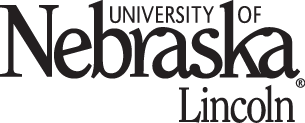 Harold Heins
Harold HeinsI'd like to touch on the ring that I have here. This ring was given to me by my first sergeant. He passed away three years ago and his wife and daughter felt that I would, I should have it. So that's why I have this ring. It's probably one of the only rings... that I know of in the country and it shows the map of where we all were, the date the war ended, and all the battles we were in there were six of them. And I start with Omaha Beach because we were the anti-aircraft protection for the paratroopers, and then our next battle was Saint. Lo and then Metz. M-E-T-Z, and then Saarlautern, and the Rhineland, and then Linz, Austria. That was the last one we were in where there were six battle total. This ring was made by a Frenchman, as I recall Bob telling me, he designed this and asked him if he could make this and in the broken communications they had he shook his head that, that's how Bob knew that it would be made, and i-it's a silver ring and it's a treasured gift. Because Bob wouldn't need to have given that to me. But anyway, I have his ring now gratefully to his wife and daughter. And we pay honor to Bob because he was recognized by the California legislature for doing work of going around, California. And other places and explaining about the war. He done this for... I'm not sure how many years but it was a number of years, that's why the legislature bestowed an honor on him. He would- Bob was a gifted speaker, and he could impress on you how serious all these wars were, or battles were. I- I'll hold up and show you what, this is Bob Hassen. He and his wife lived at Camarillo, California. His wife is still living. Another one of the pictures this is his wife there, also. This one here, this one shows Bob being congratulated by the legislature. They all stood at attention for him.
I'd like to, uh, show this picture of all the guards that were at Ohrdruf. Where the prisoners found out that we were coming they attacked the guards and killed them. There, the blood was still, it wasn't coagulated yet. There was still running off when these, when we got there. They were so overjoyed that, you can't describe this, really. I was standing just to the left of this picture, when it was taken so I know this was right. The people were not aware that this camp was there. They couldn't believe it. I want to show you another picture, this shows the gallow, or the framework that the people were hung on here. And... Emphasize it more yet, here is General Eisenhower, General Patton, General Bradley, and then in there, in the group is Bob Hassen. And this was being explained by one of the men that was at a prison there. So this was one of the first camps, that was released and the picture of the president being there is, adds emphasis to it.
Donna WalterAnything else that you can think of about that day of liberation or the day that you were there at Ohrdruf that you haven't told us about? What were your comrades reactions to what they saw?
Harold HeinsJust dumbfounded. Dumbfounded to think that people, people could, have something, a death camp right beside them and not realize it. It's, it's beyond words.
Donna WalterWhen you shared this information with people back home, what was their reaction?
Harold HeinsWell, they can't believe it, they can't believe it. People can't understand, we're on it- we're not used to something like that. They can't understand that people can be so low, that humanity can get that low. These people were, well, we know in the other camps where they were gassed to death, horrible things. Oh I'd have another place that I saw- but the more I talk about that- I've saw in the Midwest where we used to a trench silos and that was one of the first ones I saw is a trench silo, all dug out, oh, it was at least oh oh, I bet it was, I bet it was six, I bet was at least seven or eight feet deep and they had a two railroads right on, I mean they took the rails off of the railroad track and laid it down in the center of it, and they had prisoners put wooden tree limbs on them tracks. They marched prisoners on that and shot them. They had another group put tree limbs on the top of those dead bodies, march more prisoners on them and shot them. They'd done that three times and I know I saw it I was right on top of that.
Donna WalterAnd where was this?
Harold HeinsNow I can't tell you, I've forgotten but that was right away when we first got there.
Donna WalterAt Ohrdruf?
Harold HeinsThis wasn't at Ohrdruf.
Donna WalterOkay
Harold HeinsIt was... sorry, I can't tell you what that was.
Donna WalterBut when you first arrived in Europe?
Harold HeinsYes, yes, yes. You can't believe somebody can be that horrible, but that was done and I saw I was right on top of that. I... Can you imagine if that happened to your family? Or your neighbor, or say your father or mother or one of your children. Do you think you should fight for freedom? I don't know what to say.
Donna WalterI, I want to go back just a little bit. I'm amazed at the compassion you showed for that German soldier, having known what happened, can you explain a little bit what went through your head?
Harold HeinsWell, I sympathized with him because I had a child and well had two children then already. My, my mother of course is gone, my dad was living here alone, and our other place alone. And, you can get pretty emotional. Really emotional, and you can feel for them people because you know that they, they, they're not driven by anything of hate, that's it. No, a lot of the words they said, Deutschland kaputt, Deutschland kaputt. In other words, Deutschland was done, They were over, they didn't really bear any malice toward us. I didn't I didn't measure that, I didn't measure any malice toward us it was more of relief. Grateful that we have been there to stop that. That's, that's what I measure more than anything else, that they were relieved that it was over with. And I'm supposed I'm supposing that it would be just like we felt now we can go back home. But they didn't have places to go, I swear they didn't have places to go. They just didn't. And it takes me back to, I'd have four or five boys come up and want me to shoot rabbits for them, and you can't measure the glee you can't understand the glee that that just to get a rabbit so they'd have something to eat. Because I'm sure that the only thing they had was potatoes and maybe eggs from chickens. Maybe, I don't know where they got the grain to feed the chickens, but their substance was very small, very small. Well, only thing I can say we're just grateful that we live in our country.
Donna WalterWhen did you return to the United States?
Harold HeinsIn 1945. 1945. October of 1945, 22nd of October '45. That was, I can't describe it.
Donna WalterWhere was your port of, point of entry back into United States?
Harold HeinsIt was in New York.
Donna WalterIn New York.
Harold HeinsYes. And we can't, I was discharged at Camp Crowder Kansas. And then from Camp Crowder I came to Lincoln, Nebraska, and that's where my dad and wife picked me up. So that was, Beverly was just, well, I think it was two. She could stand in the front seat and she looked back and see who that guy was back there. She'd look at me she didn't know me. It, and well it was Christmas before she, we started to make up. So that was three months, and that was... We played you know make a circle in the snow like we call it Fox and Goose so that's, we were out playing and that's when she made up. And it's quite a thing, really quite a thing.







